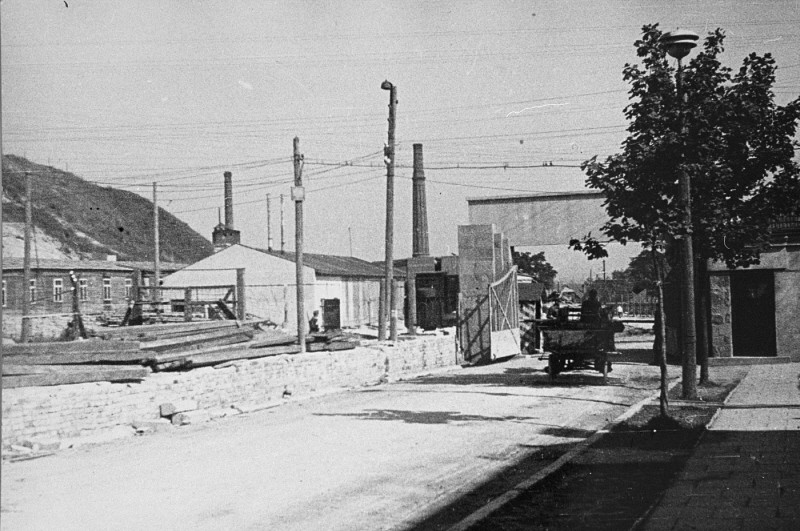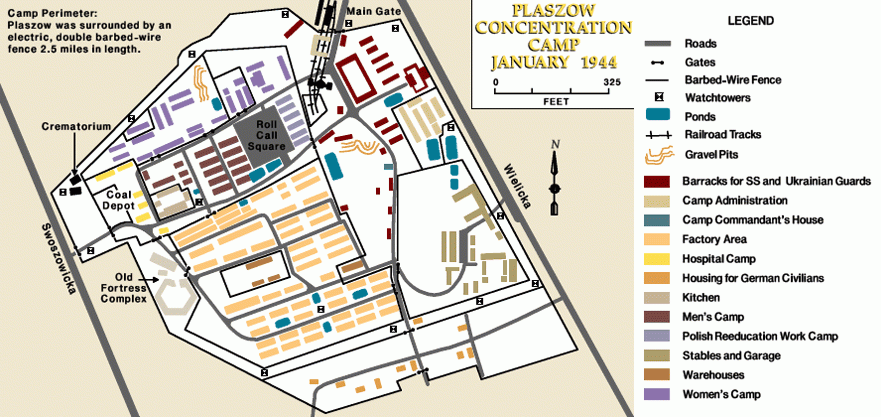
Plaszow
The Plaszow camp was established in 1942 under the authority of the SS and police leaders in Krakow (Cracow). It was initially a forced-labor camp for Jews. The original site of the camp included two Jewish cemeteries. From time to time the SS enlarged the camp. It reached its maximum size in 1944, the same year that it became a concentration camp. Until that time, most of the camp guards were Ukrainian police auxiliaries chosen from among Soviet soldiers in German prisoner-of-war camps and trained at the Trawniki training camp in Lublin.

Plaszow camp was surrounded by an electrified barbed-wired fence and was divided into several sections. The camp had barracks for German personnel, factories, warehouses, a men's camp and a women's camp, and a "labor education camp" for Polish workers who violated labor discipline. Poles and Jews were segregated within the camp. The largest number of people confined in Plaszow at any one time was over 20,000. Thousands were killed there, mostly by shooting.

The German industrialist Oskar Schindler established an enamelware factory in Krakow, adjacent to Plaszow. He attempted to protect his Jewish workers, some 900 people, from abuse in Plaszow and from deportation to killing centers. When he moved the factory and his Jewish work force to the Sudetenland (an area formerly in Czechoslovakia) in 1944, he prevented the deportation of more than 1,000 Jews.
As the Soviet army approached in the summer of 1944, the Germans prepared to dismantle the Plaszow camp. The SS transferred prisoners to other concentration camps in Germany and Austria. Others were deported to the Auschwitz-Birkenau killing center and murdered there. The Germans also attempted to remove all traces of the crimes that had been committed in the camp. They ordered that mass graves at Plaszow be opened and the bodies exhumed and burned. In January 1945, the last prisoners from Plaszow were sent to Auschwitz for evacuation further west.
Critical Thinking Questions
- Where were camps located?
- To what degree was the local population aware of this camp, its purpose, and the conditions within? How would you begin to research this question?
- How did the functions of the camp system expand once World War II started?
- Did the outside world have any knowledge about these camps? If so, what, if any, actions were taken by other governments and their officials?

